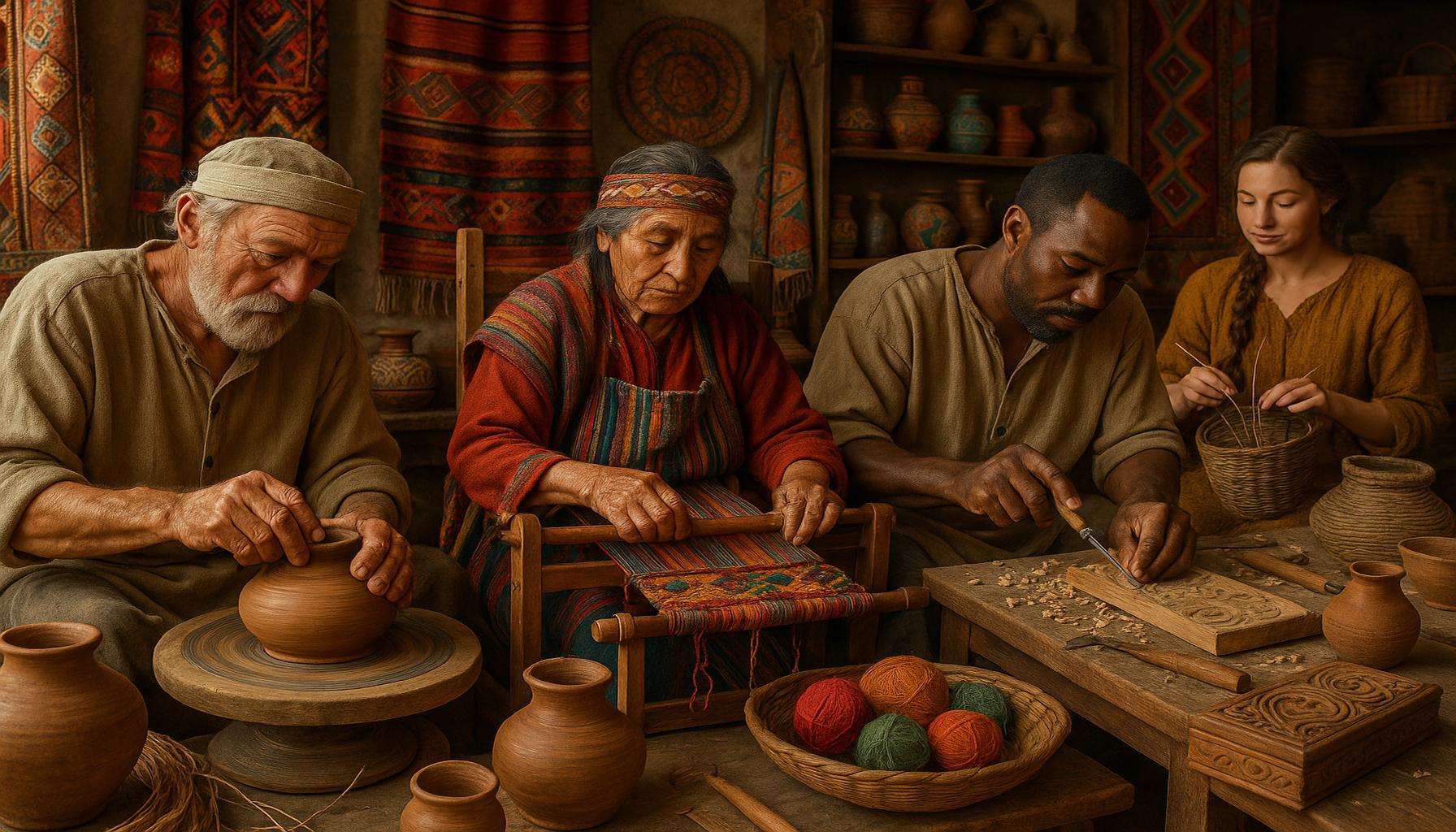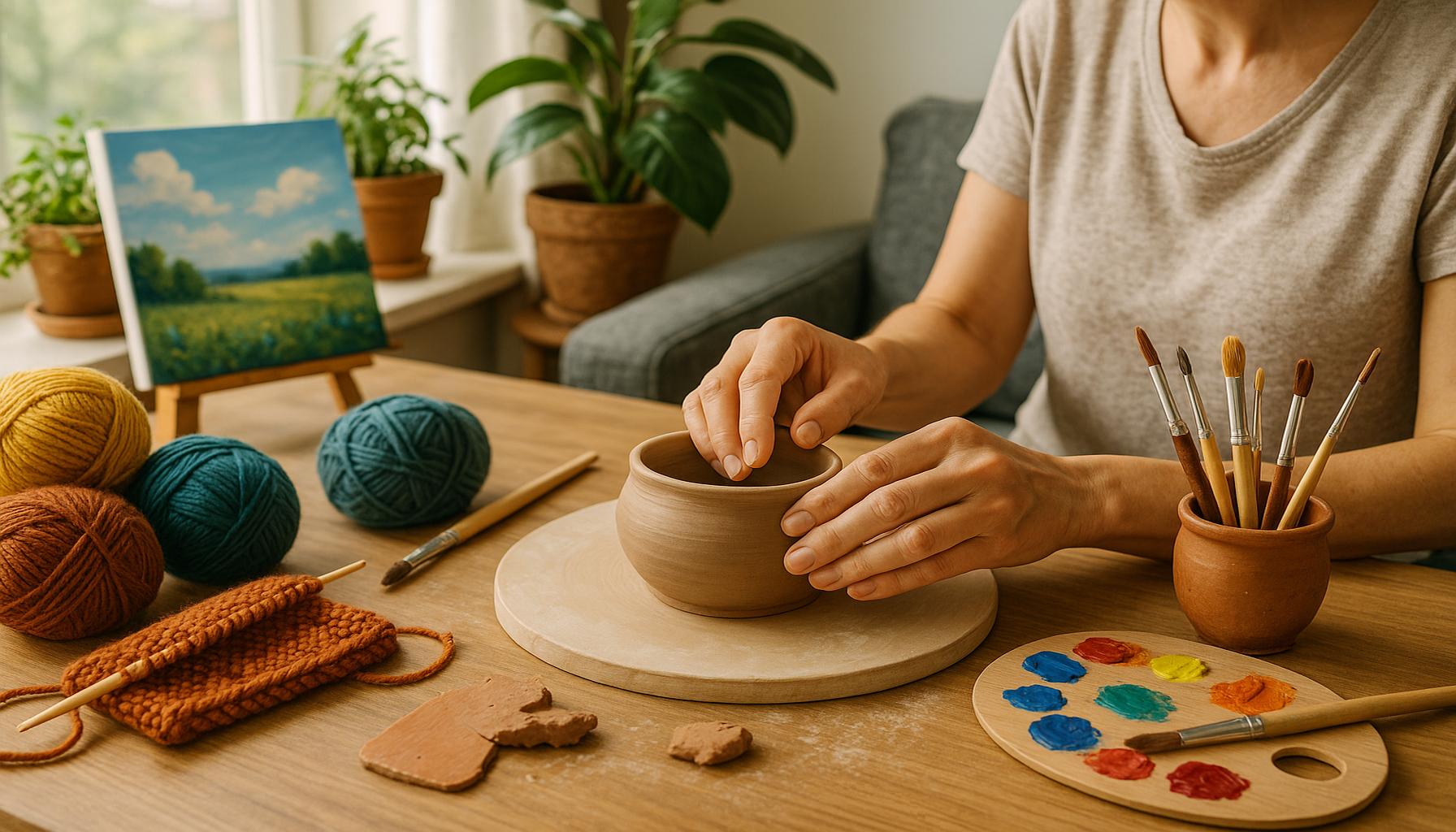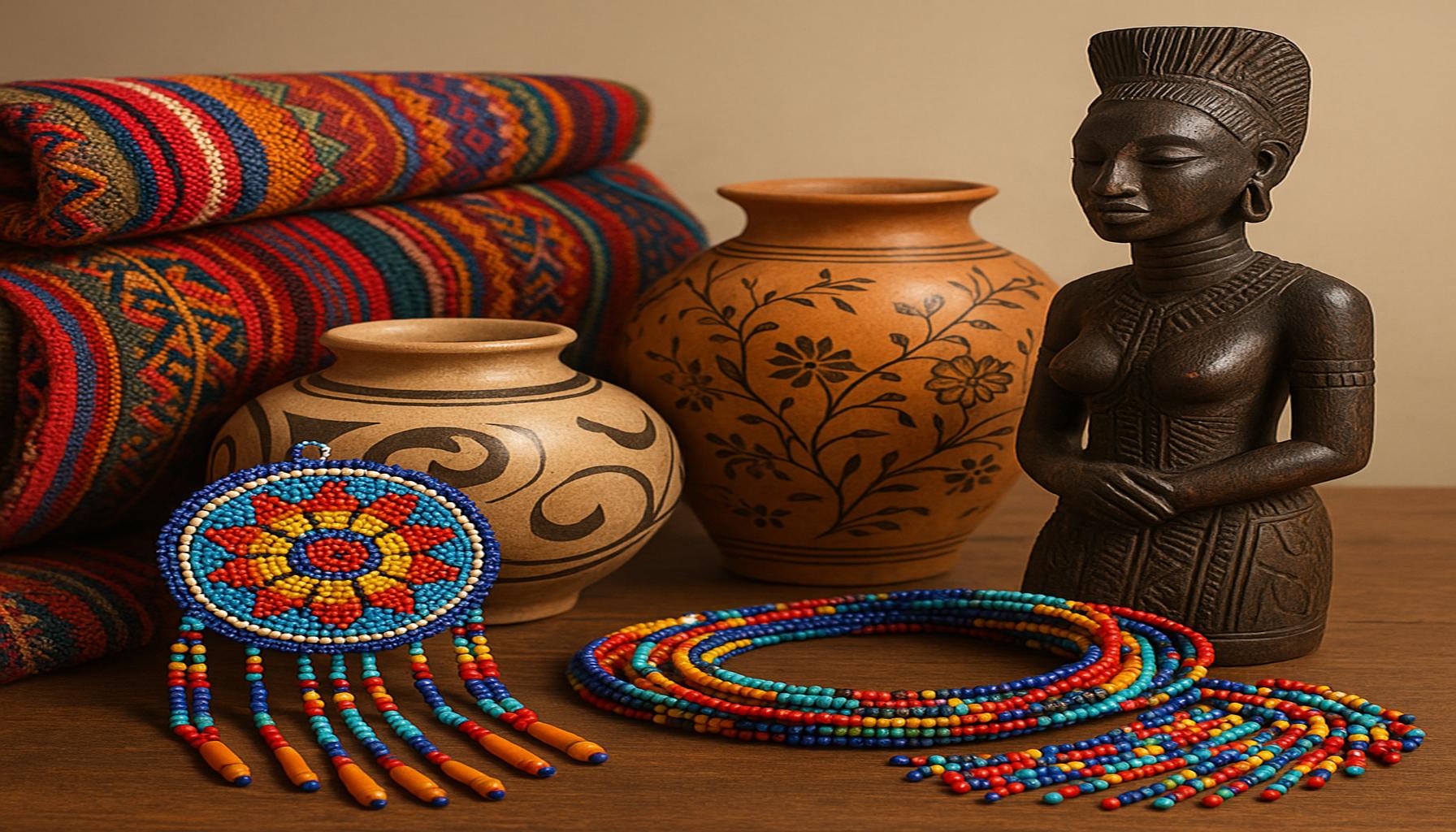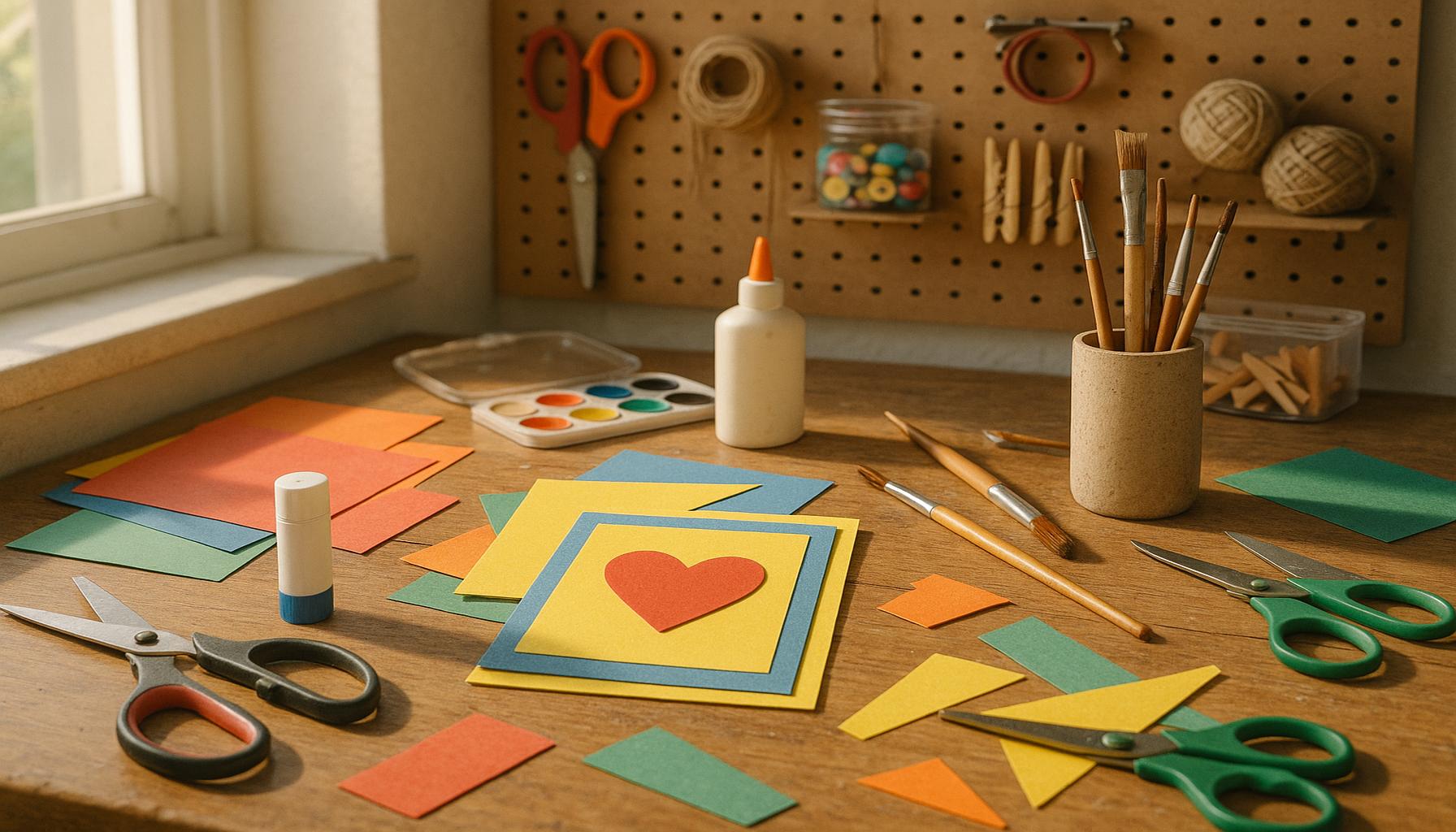The History of Handicrafts: How Manual Traditions Shaped Cultures and Communities

Handicrafts and Their Cultural Significance
The world of handicrafts is not merely about the tangible creations but is deeply intertwined with the narratives and identities of various cultures. For centuries, artisans have utilized materials sourced from their surroundings to create unique pieces that tell stories of their people. These creations often serve as a reflection of the community’s values, beliefs, and historical events, acting as a window into the past.
Take, for example, the art of pottery among Native American tribes. Each piece of pottery is not just a functional item; it’s imbued with cultural significance, often featuring traditional designs that express their connection to nature and spirituality. Similarly, the quilting traditions found in the American South present a rich tapestry of life experiences. For many families, quilts are a labor of love, with each stitch holding stories of resilience, community gatherings, and even movements for social change.
Traditional Handicrafts Across the Nation
Across the United States, a variety of traditional crafts thrive, showcasing the diverse heritage of its people:
- Pottery and Weaving: Indigenous tribes like the Pueblo and Cherokee have been mastering pottery and weaving for centuries, creating functional yet beautiful items that serve cultural, ceremonial, and practical purposes. Their craftsmanship is often accompanied by oral histories that explain the symbolism behind patterns and colors.
- Basket Weaving: Rural communities often engage in basket weaving, a practice that has been passed down through generations. For instance, the Gullah people of the Southeastern U.S. have maintained their ancestors’ tradition of crafting baskets using locally sourced marsh grasses, producing intricate designs that tell stories of their rich cultural heritage.
- Handcrafted Furniture: In colonial settlements, skilled artisans created furniture that was not only practical but also reflected the status and social norms of the time. This craftsmanship laid the foundation for what would evolve into American furniture styles known for their quality and distinctive aesthetics.
- Textile Arts: The art of quilting has become a powerful form of expression, where each quilt represents a unique story. Quilts such as “The Underground Railroad” or “The Civil War Quilt” serve not just as bedding but as historical documents that narrate the plight and triumphs of African American communities.
The Impact of Industrialization and Modern Movements
As we explore the evolution of handicrafts, one can’t ignore the disruptive influence of industrialization, which significantly altered the landscape of handmade goods. With the advent of mass production, many traditional arts faced a decline, as cheaper manufactured items overwhelmed the market. However, this shift has sparked a contemporary resurgence of interest in artisan products, as consumers begin to value craftsmanship and sustainability over mass production.
Moreover, the role of handicrafts in cultural preservation cannot be overstated. In a rapidly globalizing world, these manual traditions provide a means to celebrate and maintain cultural identity. Organizations dedicated to preserving handicrafts offer workshops, festivals, and online platforms, ensuring that these skills continue to thrive in future generations.

In conclusion, handicrafts represent far more than mere objects; they encapsulate the essence of community and cultural identity. By recognizing their significance, we can appreciate the rich tapestry of human creativity and continue to support these important traditions as they evolve into the future.
DIVE DEEPER: Click here to discover how to craft your own narrative
Tracing the Roots of Handicrafts
The history of handicrafts is a tapestry woven with the threads of ancient cultures, each stitch representing the knowledge, skills, and creativity that define human expression. From the moment early artisans shaped clay and threaded fibers, they began a profound dialogue with their environment, producing objects that extended beyond mere utility. This connection between craft and culture is evident in myriad forms, revealing both societal values and individual stories that span generations.
In the Americas, the emergence of handicrafts can be traced back thousands of years. Indigenous communities developed methods and techniques that not only highlighted their artistic talents but also upheld cultural traditions. For the Navajo, the weaving of rugs and blankets served not only as a livelihood but as a means to convey spiritual beliefs and community narratives. Each creation embodied the land’s physicality—the colors and patterns inspired by nature reflected a profound respect for the environment and a connection between the natural and the spiritual.
Influential Factors Shaping Handicrafts
Numerous factors have influenced the formation and continuity of handicraft traditions throughout history, including:
- Geography: The availability of natural resources like clay, wood, or plants shaped the types of handicrafts that developed in different regions. For example, coastal communities often engaged in fishing nets and shell crafts, while forested areas leaned towards woodworking and textile production.
- Cultural Exchange: As trade routes were established, cultures interacted and exchanged knowledge, leading to the evolution of techniques. This cultural interchange enriched local crafts, making them more diverse and complex.
- Social Structures: In many societies, crafts were linked to specific social roles. In some Native American tribes, for instance, the roles of men and women determined the types of handicrafts produced, with women often leading the way in textile arts, while men focused on woodwork and metal crafts.
- Ritual and Ceremony: Many handicrafts hold significant ritualistic and ceremonial importance. The rituals surrounding these crafts not only preserve their methods but also reinforce community bonds. Ceremonial masks, for example, not only serve as artistic expressions but are vital artifacts in spiritual practices.
This rich history has garnered attention in contemporary society as more individuals seek authentic connections to their cultural heritage through handmade items. In our current era, the revival of interest in handicrafts is not only a push against the mundanity of mass production but also a quest for individuality and meaning. Artisans are increasingly recognized as cultural ambassadors, carrying forward the legacies of their ancestors while adapting to modern tastes and technologies.
The evolution of handicrafts continues to shape identities and foster community connections. By exploring these manual traditions, we unlock a deeper understanding of the forces that shaped our past, and we can appreciate the rich narratives that resonate through the artifacts created by skilled hands. Shifted by time yet rooted in culture, these crafts serve as enduring testaments to human ingenuity and resilience.
| Cultural Significance | Community Identity |
|---|---|
| Handicrafts reflect a region’s history and values, often passed down through generations. | They foster a sense of belonging, bringing communities together through shared traditions. |
| Artisanship nurtures a deeper appreciation for heritage, enhancing the cultural landscape. | This practice not only unites people but also promotes local economies through craftsmanship and sales. |
As we delve deeper into “The History of Handicrafts: How Manual Traditions Shaped Cultures and Communities,” it’s essential to recognize the profound role of **handicrafts** in shaping **cultural identity**. Crafts such as pottery, weaving, and woodworking serve as living archives of a community’s past, preserving stories, traditions, and skills that may otherwise fade into obscurity. In many societies, these skills are not merely hobbies but are interwoven with the fabric of social structure, often taught from one generation to the next. Communities uniting around handicrafts develop a shared sense of purpose and pride, reinforcing social bonds and cultural integrity. By engaging in traditional crafting, artisans sustain their heritage while adapting to contemporary demands, ensuring that these manual arts remain relevant in modern society. This delicate balance between preservation and innovation is vital for cultural evolution.Furthermore, the marketplace for handicrafts fosters local economies, enhancing the livelihood of artisans. This eco-friendly and sustainable production not only supports families but also enriches community ties as artisans gather to share techniques, collaborate, and celebrate creativity. As we explore more, we will examine specific illustrations of how handicrafts continue to influence personal and communal identities globally, shedding light on their changing roles in the 21st century.
DISCOVER MORE: Click here to uncover the emotional and cognitive benefits of music
The Role of Handicrafts in Economic Development
Beyond cultural significance, handicrafts have historically played a crucial role in the economic fabric of communities. As societies evolved, so too did the economic implications of manual traditions. Handicrafts became essential sources of income, particularly in rural areas where employment opportunities were limited. The sale of handmade goods allowed artisans to support their families while preserving age-old practices that defined their cultural identities.
In the United States, the 19th-century rise of the craft revival movement highlighted the economic potential of handicrafts. As industrialization threatened traditional ways of life, artisanal practices gained new appreciation. The proliferation of regional fairs and craft shows served not only as forums for showcasing local craftsmanship but also as marketplaces where artisans could connect directly with consumers. This grassroots support laid the groundwork for what is now a thriving small business sector within the handicraft industry.
Community Building Through Craft
Handicrafts have a remarkable ability to foster community ties. Within many cultures, craft-making has long been a communal activity, bringing together people across generations to share skills and stories. Workshops and cooperative studios have become popular spaces where knowledge is passed down, mirroring ancient practices of mentorship that formed the backbone of traditional craftsmanship.
Crafting circles and guilds play an integral role in this community-building aspect. For instance, organizations such as the American Craft Council have each fostered networks of artists who support and promote one another, thereby reinforcing individual and collective identities. These gatherings not only provide resources and opportunities for artisans, but they also act as cultural hubs where creativity and collaboration flourish.
Modern Trends and Globalization
As global interest in handicrafts grows, contemporary artisans are leveraging technology to reach broader audiences. Social media platforms and online marketplaces have enabled craftspeople to showcase their work to a global clientele, thereby redefining how these crafts are perceived and valued. This trend indicates that the intersection of tradition and modernity can successfully preserve manual skills while providing financial sustainability.
Furthermore, organizations promoting fair trade in handicrafts ensure artisans receive just compensation for their work. Initiatives that combat exploitative practices allow consumers to support equitable economies while gaining access to unique, culturally significant products. This shift towards ethical consumption has amplified the importance of handicrafts as symbols of resilience and identity in our increasingly globalized world.
- Artisan Supply Chains: The journey from maker to market has evolved, with many artisans embracing sustainability-oriented practices that utilize local materials. This not only reduces their environmental footprint but also celebrates local heritage.
- Global Craft Communities: International collaborations between artisans foster cross-cultural dialogues, leading to hybrid crafts that combine influences from different traditions.
The continuity and evolution of handicrafts illustrate a profound connection between people and their heritage, emphasizing the importance of manual traditions in shaping both cultural identity and community resilience.
DISCOVER MORE: Click here to explore the art of storytelling
Conclusion: The Enduring Legacy of Handicrafts
In tracing the history of handicrafts, we uncover a tapestry woven with threads of culture, community, and economic vitality. From ancient civilizations shaping their identities through intricate pottery to the modern-day artisans turning local materials into globally appreciated treasures, manual traditions have consistently been at the heart of societal development. The evolution of these crafts not only reflects artistic expression but also serves as a means of survival for many communities, providing essential livelihoods in times of economic uncertainty.
Furthermore, the rise of cooperative models and community engagement through crafting reinforces the idea that handicrafts are more than mere products; they are vessels of history, stories, and shared experiences. Organizations dedicated to preserving and promoting these traditions enable artisans to thrive while maintaining the integrity of their cultural heritage. As we step into an increasingly digital age, the accessibility of online markets has propelled traditional crafts into new realms, ensuring that they remain relevant amidst modern consumer trends.
In conclusion, the world of handicrafts embodies a dynamic blend of tradition and innovation, reminding us of the importance of craftsmanship in shaping not just individual lives but entire communities. As we celebrate and support handmade traditions, we contribute to a more sustainable future—one where culture and creativity continue to flourish. Let us embrace the legacy of handicrafts, recognizing them as essential pillars of cultural identity and economic resilience that transcend time and geography.


